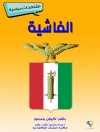This book discusses the fundamentals and practical applications of heritage conservation as an important tool of a city’s development. It presents case studies that demonstrate how to achieve a balance between the promotion of tourism industry and the generation of income while also seeking optimum sustainable methods for Conserving the City’s Tradition and Identity. The book in hand offers useful insights to a wide array of audience aware of the need to preserve the architectural beauty of cities, such as architects, policymakers, investors and even the wide public who is interested in ways of conserving and protecting cultural sites.
قائمة المحتويات
Protection, war and reconstruction: the case of the ecclesiastic buildings in Abruzzo.- Revival of Traditional Water-Based Architecture: Cases of Stepwells in India.- Silk Road architectural heritage and polycentric tourism development.- Cultural Heritage and Urban Identity in Bangladesh: A Look at ‘Jobbar’s Boli Khela’, an Indigenous Festival.- The Effects of Architectural Heritage Conservation on Social Problems. The Case of the Palace of the Marqués de Rozalejo.- Methodologic process for the reconstruction of the colonial city of St. Augustine in Florida between the 16th and 18th centuries.- Overview on Historic Municipal Markets of Karachi-Pakistan.- The development of the remedial conservation via surface consolidation: the historical synthesis.- Approach towards reversing the trends of dying town of Sidhpur with Heritage regeneratio.- Medinet Habu and Western Thebes’s sacred landscape: Traditional Identity Multifaceted Through Time.- Researchers of Architectural Heritage between History and Everyday life: Methods, Problems and Individual Practices.- The morphological study on heritage architecture:A planning proposal for the Left Street in Nanjing, China.
عن المؤلف
Antonella Versaci is a researcher and assistant professor at the Faculty of Engineering and Architecture, University “Kore” of Enna, where she is responsible of the “Laboratory of Restoration of Architectural and Cultural Heritage” and teaches “architectural restoration” and “laboratory of architectural restoration” within the Master of Architecture.
She is also an associate researcher at the Institut Parisien de Recherche Architecture Urbanistique Société (IPRAUS), a research laboratory of the ENSAPB—National Superior School of Architecture of Paris-Belleville (UMR 3329 Ausser).
Her research applies to the issues of safeguarding and conservation of historic buildings and landscape, with particular attention to cultural heritage spread across the territory and to the protection of historic centers, as well as to their survey, diagnosis, classification and valorization.
In 1996, she earned a master’s degree in Building Engineering at the University of Messina and, the following year, obtained a scholarship for postgraduate specialization courses abroad.
She then attended in Paris two courses of specialization in urban preservation, strategic planning and management earning both degrees. In 2005, she received a Ph.D. degree cum laude in “Architecture” from the University of Paris VIII, with a dissertation on the legislation on historic centers in France.
From June 2004 to September 2008, she was a UNESCO International staff member, responsible for numerous cultural projects in Southeastern Europe, including those related to the creation of a School of Restoration in Tira na (Albania) and to a Center for Digitization of heritage cultural in Skopje (FYROM).
She is the author of over 90 refereed publications.
Claudia Cennamo has been Ph.D. in Science and Technique in Historic and Modern Architecture at the University of Rome La Sapienza since 1996. She has been a researcher in the field of Structural Mechanics since 2002 and has carried out didactic activity at the Department of Architecture and Industrial Design of the University of Campania Luigi Vanvitelli, since the academic year 2004/2005. At present, she is an associate professor, and with her research group, she works in the field of safeguard of architectural heritage and historical masonry structures, especially by using calculation methods for unilateral materials. She is the author and co-author of about 150 papers regarding the issue.
Natsuko Akagawa is tenured at The University of Queensland. She is the author of heritage conservation in Japan’s cultural diplomacy: heritage, national identity and national interest (Routledge 2014), the seminal work theorising Heritage and Cultural Diplomacy. She is a co-editor of Safeguarding Intangible Heritage (Routledge 2019) and Intangible Heritage (Routledge 2009), internationally influential studies on Intangible Heritage. She is the expert member for International Council on Monuments and Sites (ICOMOS) and member of the International Council of Museums (ICOM).












